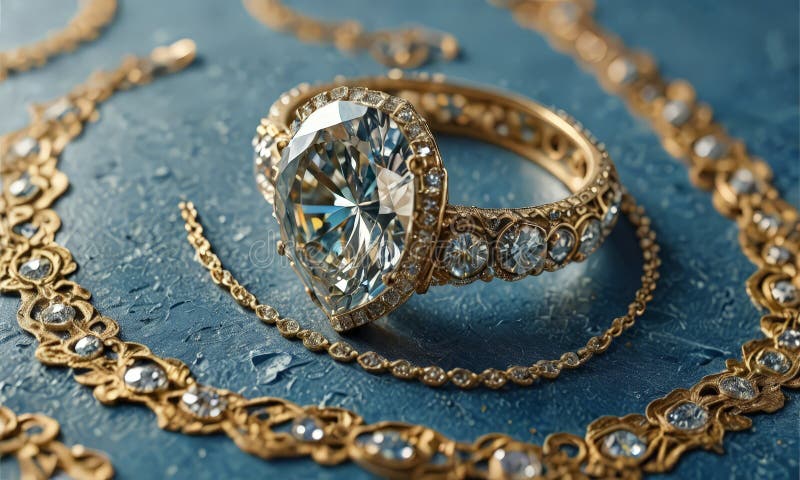
What Are Lab Grown Diamonds?
Lab grown diamonds, sometimes called synthetic or refined diamonds, are genuine diamonds that are created in a controlled environment. Unlike mined diamonds, which require millions of years to form profound within the Earth, lab grown diamonds can be created in only weeks using cutting edge innovation. They share similar physical and chemical properties as their normal partners, which implies they shimmer similarly as brightly!
The Most common way of Creating Lab Grown Diamonds
There are two primary methods used to make lab grown diamonds: High Strain High Temperature (HPHT) and Chemical Fume Deposition (CVD). The HPHT method mimics the normal conditions under which diamonds form, while the CVD method involves creating a carbon-rich gas that progressively deposits onto a substrate, forming a diamond layer by layer. The two methods produce stunning, high-quality lab created diamonds that are indistinguishable from mined stones, even to master gemologists.
The Importance of Ring Settings
With regards to diamond rings, the setting is similarly all around as important as the stone itself. The setting not just showcases the diamond yet in addition gets it set up. A very much designed setting can upgrade the general magnificence of the ring, making it a piece you’ll cherish forever.
What Are Claws in Gems?
Claws, otherwise called prongs, are little metal pieces that hold the diamond set up within the ring setting. Think of them as the “fingers” of the ring, gripping the diamond safely to keep it from falling out. Claws come in various styles, each offering a different esthetic and level of security.
Different Sorts of Claws
There are a few kinds of paw settings, including four-prong, six-prong, and much more intricate designs. Each type offers different benefits concerning security and appearance. For instance, a six-prong setting for the most part provides more stability than a four-prong setting, which can consider all the more light to enter the diamond, enhancing its brilliance.
Why Claws Matter for Lab Grown Diamonds
While you’re choosing a lab grown diamond ring, the kind of hook setting can significantly impact how the diamond looks and how secure it is. Since lab grown diamonds are many times a significant investment, you’ll need to ensure they’re set safely and displayed beautifully.
Famous Hook Settings for Lab Grown Diamond Rings
Prong Settings
Prong settings are maybe the most widely recognized choice for lab grown diamond rings claws. They typically involve little metal claws that hold the diamond over the band, allowing maximum light to go through the stone.
Upsides and downsides of Prong Settings
The main benefit of prong settings is that they showcase the diamond beautifully, enhancing its brilliance and fire. However, prong settings can likewise open the diamond to potential harm. If you lead an active lifestyle or work with your hands a ton, it might be wise to consider a more protective setting.
Bezel Settings
A bezel setting encircles the diamond with a metal rim, securing it firmly set up. This design offers a smooth, present day look and provides more protection for the diamond.
Benefits of Bezel Settings
Bezel settings are ideal for the individuals who need a stylish yet secure option. They are less inclined to catch on clothing or get harmed during daily wear, making them ideal for an active lifestyle. Additionally, the smooth design can cause the diamond to seem bigger!
Tension Settings
Tension settings hold the diamond set up by applying strain from the metal band, creating a unique floating impact. This contemporary style can particularly eye-get.
Why Pick a Tension Setting?
If you’re looking for something different, tension settings offer a stunning, present day esthetic that considers maximum light openness. However, it’s crucial to guarantee that the diamond is very much safeguarded, as this setting can be more susceptible to harm if not designed as expected.
Choosing the Right Paw Setting
Considerations for Style
While selecting a paw setting for your lab grown diamond ring, consider your own style. Do you favor classic tastefulness, present day minimalism, or something more fancy? The setting should supplement not just the diamond yet in addition your general esthetic.
Matching with the Band
Think about how the setting will look with the band. A few bands are designed to pair well with certain settings, enhancing the general look of the ring. For instance, a vintage-style band might pair beautifully with a more intricate hook setting.
Lifestyle Factors
Your lifestyle assumes a significant part in your choice of paw setting. If you carry on with an active existence, you might need to decide on a setting that offers additional protection. Alternatively, if you’re looking for a piece that will stand out and shine, a prong setting might be ideal.
Caring for Your Lab Grown Diamond Ring
Cleaning and Maintenance
To keep your lab grown diamond ring looking its ideal, customary cleaning is essential. You can utilize a delicate solution of warm water and mild dish cleanser, alongside a delicate brush to clean the diamond and setting. Avoid unforgiving chemicals that can harm the metal or the diamond itself.
Storage Tips
At the point when you’re not wearing your ring, store it in a delicate pocket or a gems box to forestall scratches and harm. Keeping your ring away from other gems can assist with maintaining its radiance and forestall wear.
Conclusion: The Magnificence of Lab Grown Diamond Rings
In conclusion, lab grown diamond rings are not just stunning and eco-friendly yet in addition offer a scope of paw settings to suit your style and needs. Whether you incline toward the classic tastefulness of prong settings, the advanced look of bezels, or the unique allure of tension settings, there’s something for everybody. Make sure to consider your lifestyle and individual style while making your choice, and remember to care for your beautiful ring to keep it shining for years to come. Embrace the magnificence of lab grown diamonds and the craftsmanship that holds them safely set up!





